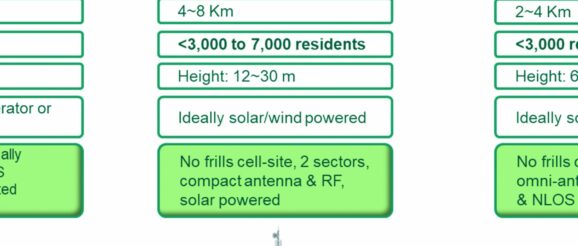Innovation is finally reinventing rural broadband connectivity (Analyst Angle)

In the past 5 to 10 years, there have been several novel if not downright quirky communication solutions trying to address the needs of rural connectivity, especially in emerging markets. These have ranged from tethered and free-floating balloons to circling solar-powered high-altitude aircraft, but the reality is that mobile telcos need tried and tested solutions that can be deployed in communities today. According to the United Nations, almost half of the world’s population (44.3%) live in rural areas. The unrealized goal of complete rural connectivity can be attributed to two main factors:
The Mobile Broadband Multiplier Effect
The World Bank report, Exploring the relationship between broadband and economic growth, established that a 10% increase in broadband penetration boosts Gross Domestic Product growth by 1.38% in emerging markets. In rural areas, it is uneconomic to deploy fixed-line broadband, so mobile broadband is significantly easier to deploy. Mobile Internet connectivity is an economic multiplier that can transform rural communities.
In these challenging times of the COVID-19 pandemic, mobile connectivity can support distance education, healthcare, and the economy. The rationale for supporting mobile broadband infrastructure in rural communities is underscored by studies by governments and non-government organizations:
Optimizing Rural Cell Site Solutions
Rural communities require a variety of cell site solutions to address their needs. The traditional macro cell site is generally deployed by operators for wide coverage scenarios, but they also need low-cost cell site infrastructure for optimized coverage. Small cells can provide “infill” and “targeted” coverage in communities with 3,000 or fewer residents (see Figure 1).
The good news is that competition between infrastructure vendors is yielding results. All the major vendors have developed increasingly cost-effective solutions, but what are the key criteria? ABI Research’s Mobile Cellular Deployment Solutions for Rural Cell Sites report (AN-5226) provides the following criteria for rural connectivity:
Huawei claims it has made additional progress with LTE Relay technologies. RuralStar Pro is based on the International Telecommunication Union’s Integrated Access and Backhaul (IAB) concept, which has relay capability and integrates the LTE Relay and small cell connectivity components into a single unit that is easier to manage and install. This innovative approach ensures that the transmission distance can potentially reach 40 Kilometers.
Summary Conclusions
There is considerable pent-up demand for cost-effective rural cell site deployment. Over the years, there have been a number of alternative connectivity solutions, but the harsh reality is that it has only been these ground-based, cell site solutions that can deliver reliable coverage and guaranteed bandwidth that supports greater adoption of cellular services by the local community. They have been able to harness the latest innovations in cellular radio engineering and the novel use of materials and components.
Over the next 5 to 10 years, ABI Research expects sustained investment in rural cellular Radio Access Network (RAN) infrastructure. The Compound Annual Growth Rate for these targeted and infill type small cells across all rural regions will be higher than for macro base stations, with the global number of rural small cells installed estimated to reach 544,000 by 2024.
Rural connectivity faces several engineering, logistical, and economic challenges. In many emerging markets, the disposable income of end users constrains the available investment by mobile telcos. The Average Revenue per User (ARPU) in Nigeria, India, and Indonesia is US$3.35, US$2.15, and US$2.64 per month, respectively. These very low ARPUs mean that mobile telcos have a razor thin TCO budget. Many national and international bodies offer grants and subsidies, but not enough to solve operators’ financial constraints.
Technological innovation and product optimization can go a long way to solving the rural broadband connectivity gap and achieving a virtuous investment cycle that benefits rural communities. The innovative use of cell site foundation strategies, efficient solar power usage, innovative LTE Relay backhaul to save OPEX, and advanced integrated design strategies, such as IAB, will help make mobile rural broadband connectivity a reality.
